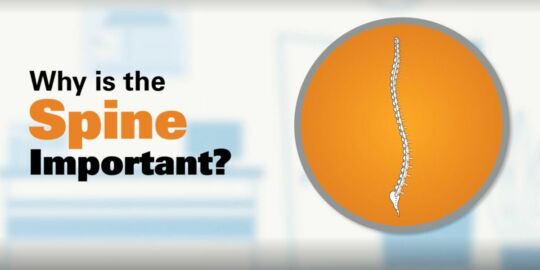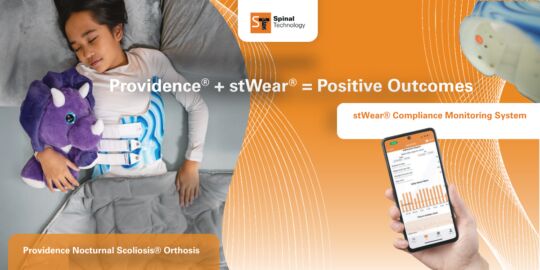Can Food Help Manage Scoliosis and Brace Comfort?
Living with scoliosis often means learning how to care for your child's spine more intentionally through regular check-ins, physical activity, bracing, and mindful daily habits. But what many families and individuals don’t realize is that nutrition can also play a quiet yet powerful role in managing the challenges of scoliosis.
While scoliosis is a structural condition, so a healthy meal can’t directly “fix” it, food can influence how the body responds to stress, heals, and adapts. The right nutrients may help reduce inflammation, support bone strength, and even improve energy and focus, which is important for anyone navigating life in a scoliosis back brace.
Let’s examine how the right diet can complement scoliosis braces and holistic treatment approaches, offering patients (and parents) another tool to feel stronger, comfortable, and more in control of their journey.
The Role of Inflammation in Scoliosis Discomfort
Scoliosis may be a condition of the spine, but its effects often ripple through the rest of the body. One of the most common challenges, especially for teens and adults, is managing discomfort and fatigue. And while every case is unique, inflammation can quietly amplify pain, making it harder to stay active, focused, or even optimistic.
Inflammation may heighten muscle soreness, joint stiffness, and nerve sensitivity, issues that can already be present for someone who wears a spine brace for scoliosis during long school or workdays. For these individuals, reducing inflammation can improve their daily function and mental well-being.
Anti-inflammatory foods like leafy greens, berries, nuts, and oily fish offer essential nutrients that may help the body stay balanced and less reactive to physical strain. When combined with consistent care, such as wearing a scoliosis spinal brace or following a physical therapy plan, an anti-inflammatory diet can become a meaningful part of pain management.
It’s not a cure, but it’s a tool. And sometimes, small tools make a big difference.
Nutrients for Bone and Muscle Health
While a brace for a curved spine helps maintain alignment and reduce strain, the strength of your bones and muscles still plays a major role in how you feel daily. Nutrition can complement bracing by helping the body stay strong, flexible, and better equipped to handle the physical demands of treatment.
A well-balanced diet rich in calcium, magnesium, and vitamin D can support bone health and help the body adapt to wearing a scoliosis spinal brace:
- Calcium: Found in dairy, leafy greens, almonds, and fortified plant milks. Calcium is essential for maintaining bone density, something anyone wearing a back brace for scoliosis should prioritize.
- Vitamin D: This vitamin helps the body absorb calcium and supports immune function. Sunlight exposure helps, but foods like salmon, eggs, and fortified cereals can also increase its levels.
- Magnesium: Important for muscle function and relaxation. Magnesium is found in foods like spinach, beans, seeds, and whole grains. It may help ease tension in muscles that work harder due to spinal imbalances.
- Protein: Muscles need adequate protein to stay strong and support the spine’s structure. Teens, especially those who may be adjusting to a scoliosis brace for teenagers, benefit from protein-rich meals to fuel growth and resilience.
These nutrients don’t replace medical care, but they can support it. Nourishing the body helps build a stronger foundation for healing and mobility.

For young patients, pairing healthy meals with a scoliosis brace ensures that they have the energy and nutrients needed to support growth and brace wear. When someone feels physically better, less fatigued, and less inflamed, it’s often easier to stick with the treatment and feel more confident, both physically and emotionally. For them, brace compliance is important, so helping them to feel better makes a difference in their journey.
Hydration and Its Underrated Benefits
It’s easy to overlook water as a part of scoliosis management but staying well-hydrated plays a surprisingly supportive role. Proper hydration helps maintain the elasticity of spinal discs and reduces muscle fatigue, which can be particularly important for those wearing a scoliosis spinal brace for several hours a day.
When muscles are dehydrated, they tend to cramp and tighten more easily. For individuals braced for scoliosis, that extra tension can add discomfort to an already stressed area. Drinking enough water helps your muscles stay supple, and your joints move more freely, making it easier for your spine brace for scoliosis to do its job effectively.
Encouraging children and teens to keep a water bottle handy, especially while adjusting to a scoliosis brace, is a simple but meaningful way to support their comfort and energy levels throughout the day.
When paired with scoliosis braces and a balanced diet, hydration becomes another small yet powerful tool in managing everyday symptoms.
Foods That May Contribute to Inflammation and Discomfort

Just as certain foods can support spinal health, others may work against it. Highly processed foods, like sugary snacks, fried items, and refined carbohydrates, can promote inflammation in the body, which may worsen discomfort in people with scoliosis. While these foods don’t directly cause curvature progression, they can increase muscle soreness and fatigue, especially for those who wear a back brace for scoliosis for long periods.
Excess salt and caffeine can also impact calcium levels and bone density over time. And while it’s perfectly okay to enjoy treats in moderation, consistent overconsumption may leave your body less resilient and more prone to stiffness or tension.
For kids and teenagers who may already be adjusting to the look and feel of a scoliosis back brace, adding sugar crashes or inflammation-triggering food to the mix can lead to lower energy and mood swings, both of which affect overall confidence and well-being.
By swapping processed foods for whole options like fruits, vegetables, lean proteins, and whole grains, families can help reduce inflammation and better support how the body feels and functions.
Nourishing the Body and Supporting the Spine
Scoliosis management is never one-size-fits-all, but progress is possible with the right combination of tools. While scoliosis braces offer vital structural support, they work best when paired with overall wellness strategies, including thoughtful nutrition.
Whether it’s a scoliosis brace for teenagers or adults, exploring holistic ways to manage discomfort can have a meaningful impact. At Spinal Technology, we believe in treating the whole person, not just the curve. That’s why our custom-made scoliosis back brace options are designed with comfort, confidence, and long-term wear in mind. When combined with healthy habits, the right brace can help people braced for scoliosis live stronger, move better, and feel more in control.


